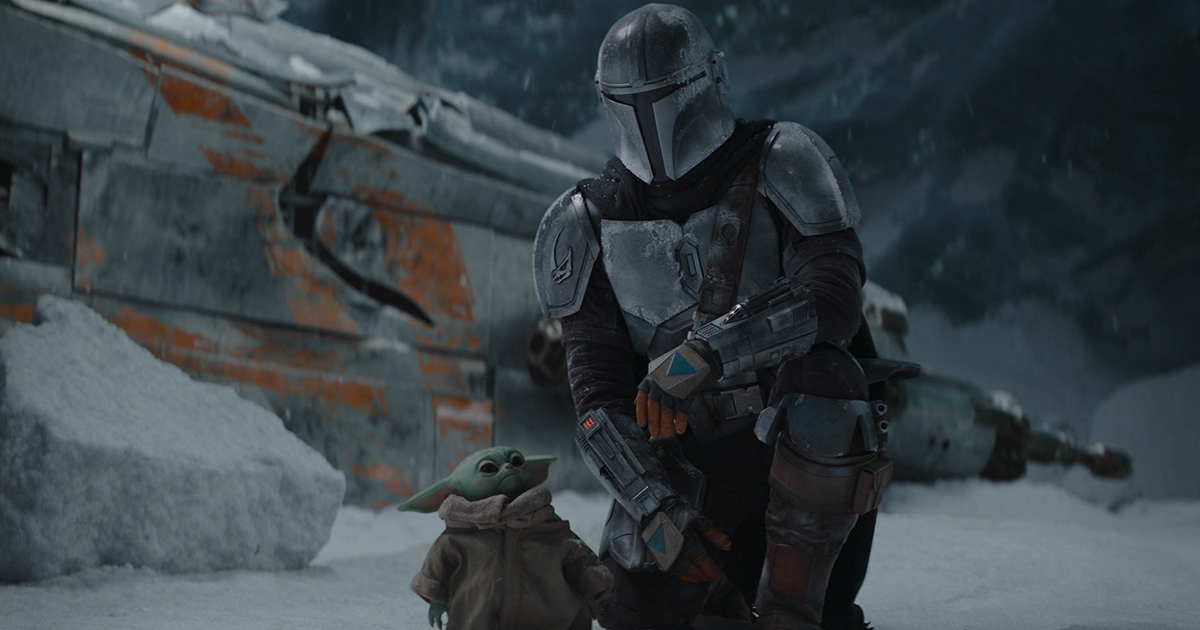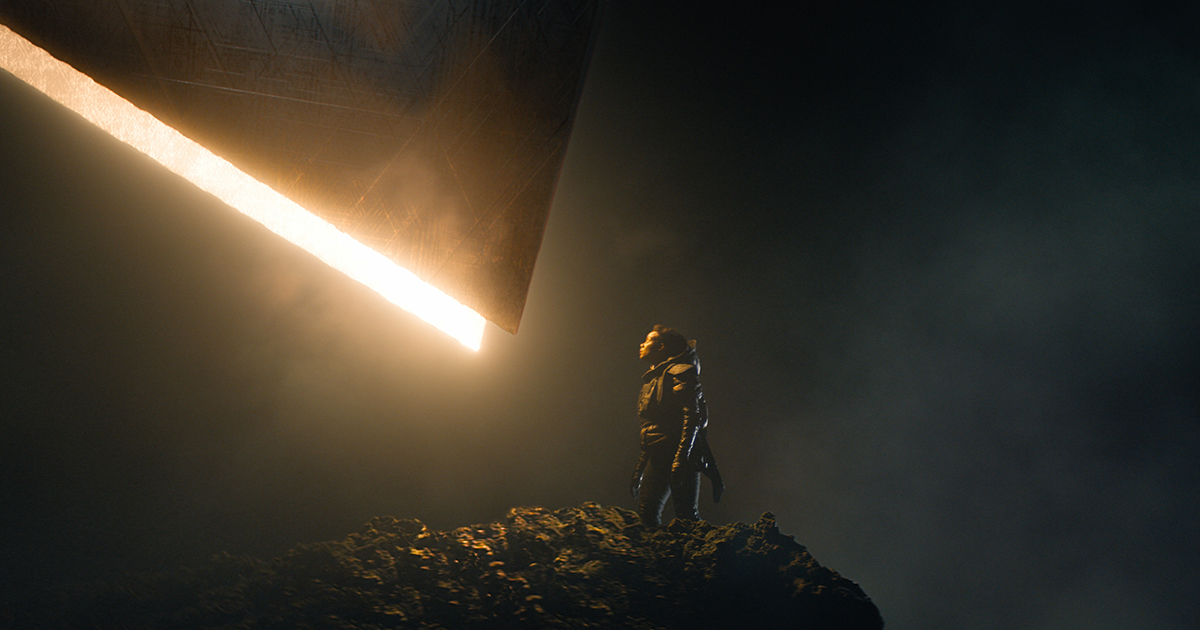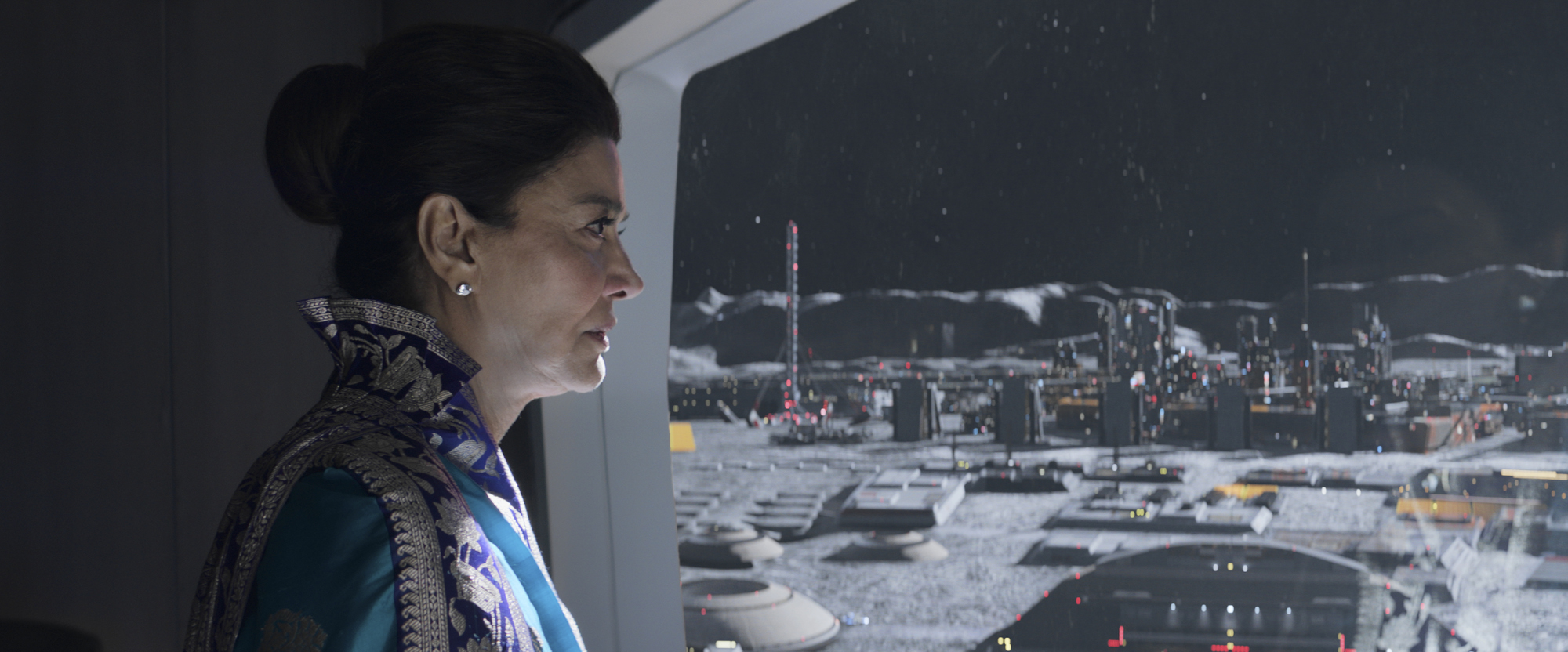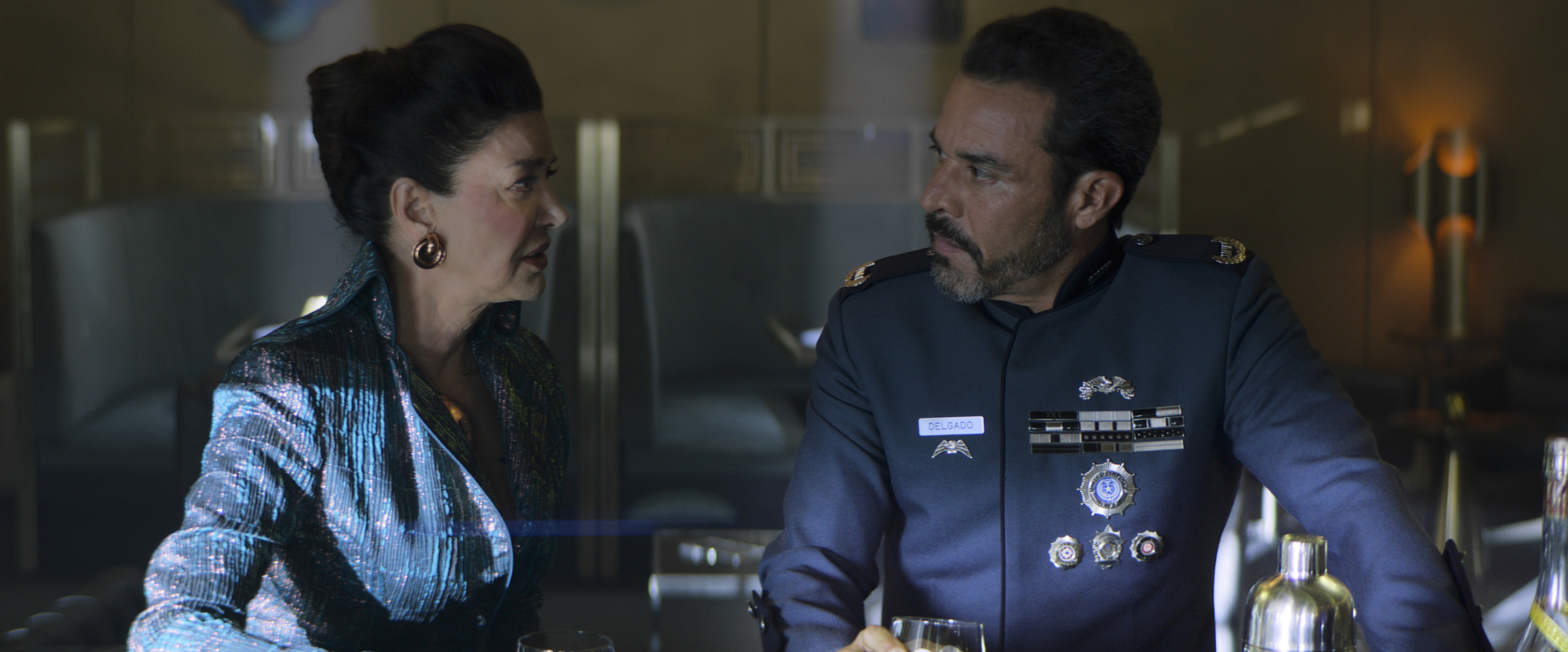
Science fiction has often needed the giant canvas and big budgets of cinema to deliver outlandish spectacle, but that could be changing as a new wave of stories open the genre up to the small screen.
It’s not just that production values can now stretch to world-building space operas. Politically, culturally and technologically, we are at a point where reaching for the stars is increasingly attainable — and urgent.
The streamers are leading the charge. Apple TV+ has run two seasons of For All Mankind, dramatizing an alternate history depicting what would have happened if the Soviet Union succeeded in the first crewed Moon landing ahead of the US. A third season is in the works.
Raised by Wolves, created by Aaron Guzikowski with a helping hand from Ridley Scott, who directed the show’s first two episodes, is about saving mankind. That task is handed to a pair of androids charged with protecting a colony of human children after Earth is destroyed by a great war. It has performed well enough for HBO Max to order a second season.
AppleTV+ just debuted Foundation, adapted from the epoch-leaping novels of Isaac Azimov and starring Jared Harris.

It’s taken a while for the golden age of TV to catch up with expansive science fiction drama.
One reason, perhaps, is that sci-fi stories were perceived to require lavish budgets in order to sell futuristic space technology and landscapes that are literally out of this world.
Now new technology and larger streaming budgets mean production values have taken a quantum leap.
The Mandalorian used location photography as a background to the action rendered in front of LED screens to create and augment the Star Wars universe for streaming.

“From a technical perspective, you can do things today you couldn’t five or 10 years ago,” The Expanse showrunner Naren Shankar told The Guardian. “And when you uncork that — when you understand that this storytelling is not just a guy in a rubber suit wiggling tentacles at you — suddenly you can express things that the genre has done for 50 years, but couldn’t get on screen.”
The economics of the industry is one reason why sci-fi makes good business. The future of Star Wars is definitely TV. The slate outlined by Disney includes no less than 10 new TV series, including an Obi-Wan Kenobi spin-off and two animated shows.
Might a galactic saga that takes place over several centuries succeed in doing for science fiction what Game of Thrones did for fantasy?
“I wasn’t trying to make the next Game of Thrones,” says Foundation showrunner David S. Goyer tells The Guardian. “But I was trying to depict an epic, and a story that would unfold over generations. What’s nice about telling a story over a long period of time is that characters grow and change — monsters can redeem themselves, and good people fall from grace.”

The hope of finding new life or a new home in the stars while Earth dies has long been a sci-fi trope that has gained new urgency with climate change. Since the best science fiction writing is also a critique of contemporary society these themes can be explored more thoroughly over a ten hour series or multiple series than a two-hour feature.
“There are deep concepts in the show,” says Shankar. “It’s about tribalism, it’s about cycles of history and economics and resource constraints and colonization. These are big ideas.”
Moreover, as space is being commercialized, and as NASA sets out on manned (peopled?) missions back to the Moon and to Mars, in this decade interest in space exploration has perhaps never been higher — nor more tangible.
The producers of The Expanse use real physics to create drama. According to Shankar, there’s a sequence in the first season where the ships turn their engines on and off, causing them to shift from gravity to weightlessness. Two characters suddenly lose gravity and can’t get back to where they need to be, and the solution is conservation of momentum.
This commitment to accuracy is shared by the team behind For All Mankind, which includes an astronaut consulting on the show. “He’ll tell us when we come up with ideas that are against the laws of physics,” explains co-creator Matt Wolpert.
READ MORE: ‘Astronauts check our scripts!’: inside the new age of sumptuous sci-fi TV (The Guardian)
NASA’s mission to Mars could be the dominant world news story of the late 2020s, and the Agency says video is essential to its technical and scientific success as well as humankind’s ability to experience an entirely new world.
“Most of our astronauts are very interested in imagery,” said Kelly O Humphries, news chief at Johnson Space Station/NASA, and the voice of mission control for more than 50 shuttle missions. “It’s like when you go on vacation you want to come back and share what you’ve seen. Astronauts are the same.”
Astronaut training even includes building 4K camcorders from a series of component parts while in orbit. “We write procedures for them to build the rig, mount a lens, put a cage around the body,” said Humphries.
The live coverage of the Perseverance landing in February was part of NASA’s PR effort to justify the $2.4 billion it took to build and launch it. The estimate to land and operate the rover during its prime mission alone is $300 million.
Space watching via channels like NASA TV is already routine but it’s going to become a cinematic event over the next decade as the number of missions and the ambition of them rockets upwards.
Aside from NASA, ExoMars a Russian and European Space Agency program plans to land a rover on Mars in 2023. China has plans to drive a rover on the red planet by 2030; There are also probes due to launch to Jupiter and Saturn’s moon Titan in the late 2020s and space tourism has lift off courtesy Bezos, Branson, Musk and Russian agency Roscosmos.
READ MORE: Mars Rover landing: How NASA sent high quality video from another world (RedShark News)
Tom Cruise announced plans to make an actual blockbuster in orbit on board the ISS, in a film to be funded by NASA.
But ratings will go into stellar overdrive with manned missions back to the lunar surface and to Mars which should lift off by 2030.
Even if you think it’s all being filmed on a lot in Burbank these seat-of-the-pants thrill rides will be must-watch moments.
What’s Inside the Mystery Box?
In a TED talk, J.J. Abrams traces his love for the unseen mystery — a passion that’s evident in his films and TV shows— back to its magical beginnings.
He recalls buying a “Mystery Magic Box,” and marvels at everything it represented: “The thing is that it represents infinite possibility. It represents hope. It represents potential. And what I love about this box, and what I realize I sort of do in whatever it is that I do, is I find myself drawn to infinite possibility, that sense of potential. And I realize that mystery is the catalyst for imagination. Now, it’s not the most ground-breaking idea, but when I started to think that maybe there are times when mystery is more important than knowledge. I started getting interested in this. “








